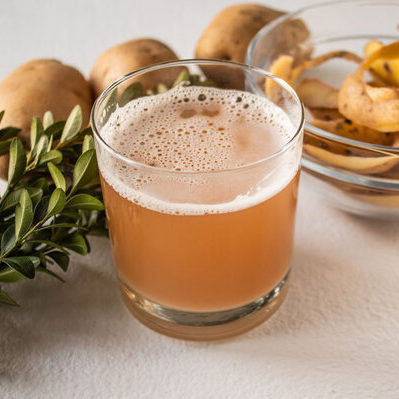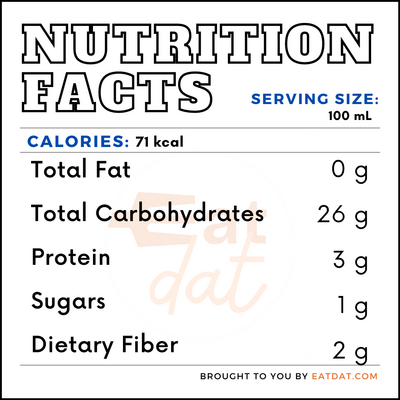
Potato Juice
What is Potato Juice?
Potato juice is a beverage obtained from raw potatoes (Solanum tuberosum). This juice is nutrient-dense as it comes loaded with minerals, antioxidants, and phytochemicals. It is considered healthy and an excellent choice for B Vitamins, as well as Vitamin C.
- This beverage is also very alkaline, which makes it valuable for treating acid reflux or other stomach issues.
- This juice has a somewhat bland taste due to its starchy consistency, but other vegetable juices can enhance its flavor.
Some popular juices to combine potato juice with include:
- Carrot
- Apple
- Mango
- Spinach
- Kale
- Cucumber
- Lemon
- Lime
- Basil
Origin of potato juice
Potatoes were first discovered by the Incas in Peru between 8,000 BC to 5,000 BC. Spanish conquistadors conquered Peru in 1536 and later took potatoes to Europe with them. For years, Europeans viewed this vegetable as a cause of disease and bad luck. This thought decreased when France was looking for a solid food source for their military and King Louis XVI encouraged its large-scale production.
The king soon gave funds and acres of land to grow the vegetable. Soon after, people began to change their minds about potatoes when they saw the kind of attention this root vegetable garnered. Later in 1589, Sir Walter Raleigh took potatoes to Ireland. The vegetable slowly spread over other parts of Europe over the next four decades and grew in popularity.
Nutrition
In a 100ml serving, there are:

This juice has a wide variety of health benefits. This juice offers a rich blend of nutrients like vitamin C, B vitamins, potassium, and magnesium. These help the human body absorb iron and form collagen in muscle, blood vessels, cartilage, and bone. This juice is also rich in phytochemicals and antioxidants that can help control inflammation, prevent disease, and neutralize free radicals.
There are also studies that suggest that it can inhibit cancer cells in the colon and liver. However, consuming this drink in excess may be toxic. In extreme cases, this juice may cause diarrhea and bloating. For best results, you should only consume the juice of one large potato per day.
Commercial production
The main constituent (potato) of this juice is the fourth largest food crop globally and the first crop to be grown in space. However, this drink is not produced commercially due to its short shelf life. Most people prefer it raw as its nutrients wear off quickly.
The general process involved in the production of this juice includes:
- First, cleaning and cutting the potato.
- Then, grating or grinding the slices.
- Finally, squeezing out the juice.
Application
When making this juice, make sure you wash the potatoes thoroughly. Do not juice sprouted, green, or even spotty potatoes. These potatoes contain solanine, which is a very toxic alkaloid.
This juice may taste bland, but you can make it more flavorful by blending it with other veggies. It is most beneficial when consumed in less than 20 minutes of making it. However, you can refrigerate it in an airtight glass jar for up to 2 days.
Potato juice recipe
This drink combines well with other juices. Here are some recipes to try:
- Orange Sweet Potato Juice
- Sweet Potato-Apple-Ginger Juice
- Cinnamon, Carrot, and Sweet Potato Juice
- Sweet Potato-Pear-Cinnamon Juice
FDA Regulation
The Food & Drug Administration has no regulations for this juice, nor do they prohibit this juice’s consumption. The FDA classifies potatoes among the 20 most consumed raw vegetables in the United States, although they don’t regulate the growing, harvesting, or packing of this crop. Nonetheless, the agency stresses the importance of moderation when consuming drinks loaded with approved artificial sweeteners.
References
Corey Whelan. “8 Reasons Why Drinking Raw Potato Juice Is the Next Big Thing” Healthline.com, Healthline Media, 12 May 2020, https://www.healthline.com/health/food-nutrition/potato-juice
“Potato Facts: Fun Facts About Potatoes: Potatoes USA.” Potato Goodness, 28 Sept. 2020, www.potatogoodness.com/potato-fun-facts-history/
CFR – Code of Federal Regulations Title 21.” Accessdata.fda.gov, U.S Food & Drug Administration, 1 Apr. 2020, https://www.accessdata.fda.gov/scripts/cdrh/cfdocs/cfcfr/CFRSearch.cfm?fr=101.44&SearchTerm=potato
“Potato: Uses, Side Effects, Interactions, Dosage, and Warning.” WebMD, WebMD, www.webmd.com/vitamins/ai/ingredientmono-809/potato
